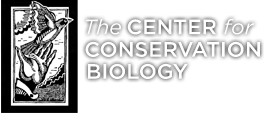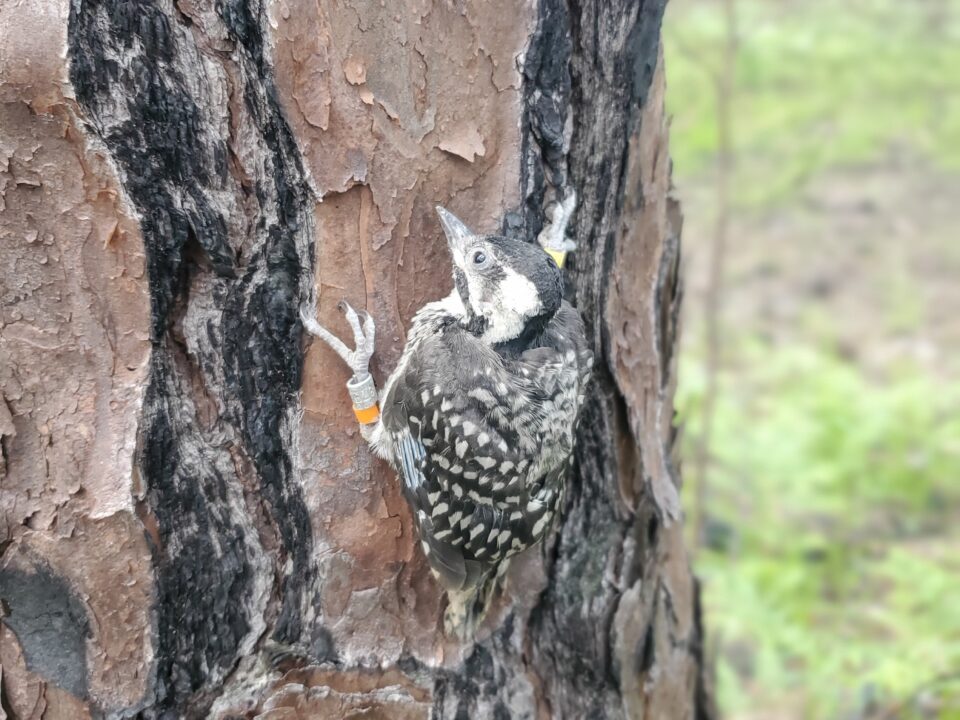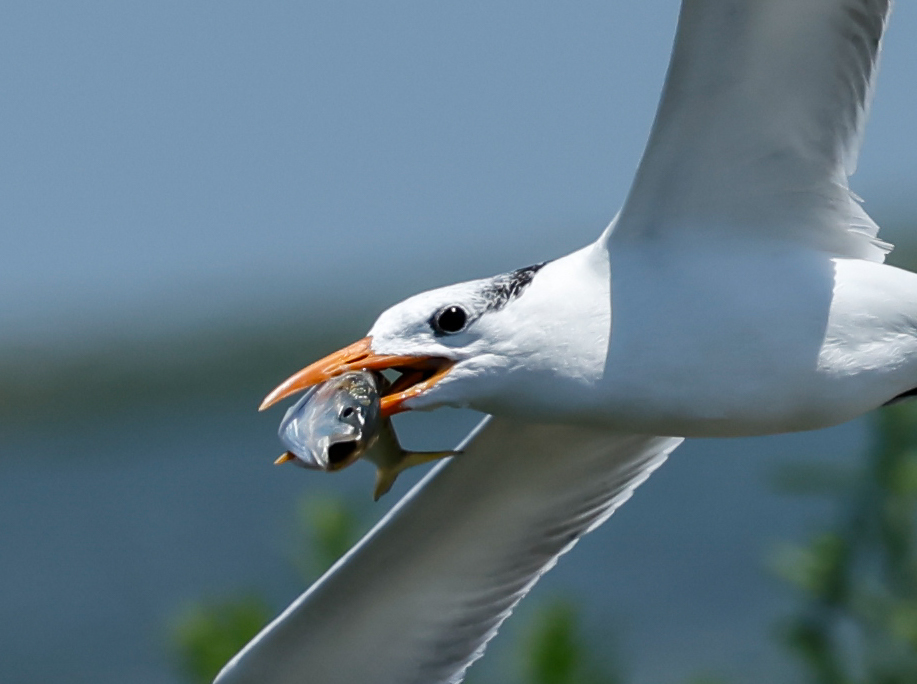Winter marshbirds
Investigation into the ecology of tidal freshwater marsh birds
March 10, 2010First Hatchling March 11, 2010
March 11, 2010
Written by Bryan Watts & Fletcher Smith
March 11, 2010

The seaside sparrow is an abundant breeding species within mid-Atlantic salt marshes but is much less common in the region during the winter months. Photo by Bryan Watts.

Nelson’s sparrow captured on Back Bay National Wildlife Refuge. Photo by Bryan Watts.
The fortunes of marsh birds rise and fall with the marsh. Some of these highly specialized species spend their entire life cycle within marshes and their geographic distribution is confined to a narrow ribbon of habitat along the outer coast. They represent some of the most sensitive indicators of marsh condition available to science. The Center for Conservation Biology (CCB) has conducted a series of research projects focused on marsh birds during the breeding season. Since 2006, research has begun to focus on the small group of species that depend on these marshes during the winter months. For many marsh-dependent birds, the mid-Atlantic represents the northern range limit during the winter months. Marshes of this region and south along the Atlantic and Gulf Coasts are typically ice free during the winter which appears to be an important factor in determining distribution, particularly for species that feed on the ground.
Since 2006, CCB biologists have been collecting information on marsh birds during the winter in coastal Virginia. The broad objective of this work is to collect information that will be critical to the long-term conservation of these species. Habitat-specific densities, age structure, site philopatry, survivorship, and habitat use are all important in understanding the potential impacts of sea-level rise on marsh-bird populations. This group has also been identified as being vulnerable to high mercury loads from these marshes. Efforts have focused on the sharp-tailed sparrow complex though other species have also been included.
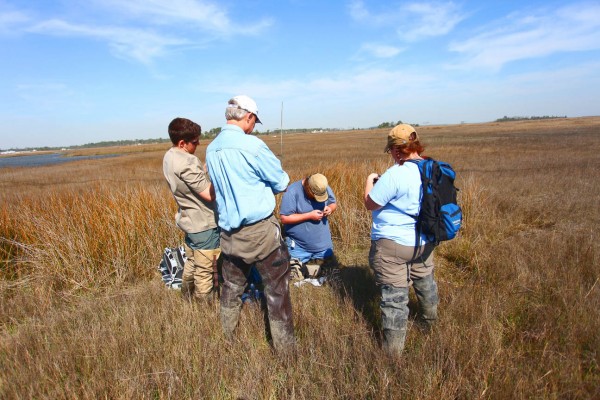
Andy McGann (left), Len Smock, and Leah Gibala-Smith watching Fletcher Smith (kneeling, center) describing plumage characteristics of the sharp-tail complex. Photo by Bryan Watts.
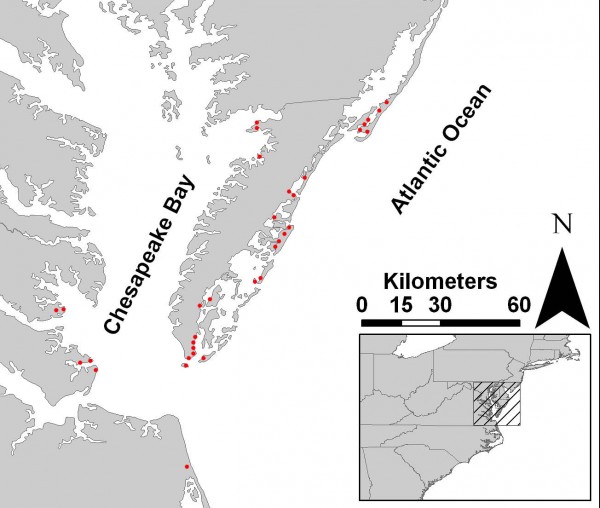
Location of marsh bird field sites used during the 2006-2010 field seasons. Map by the Center for Conservation Biology.
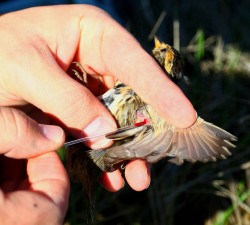
A small volume of blood is collected with a capillary tube from the brachial vein. The blood will be used to measure mercury load and stable isotopes to examine trophic position. Photo by Bryan Watts.
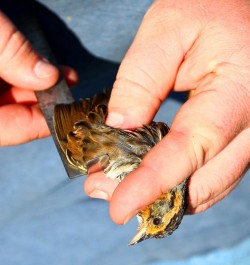
Fletcher Smith takes a wing chord measurement on a Nelson’s sparrow. Photo by Bryan Watts.
Trapping efforts have resulted in the capture and processing of 895 marsh birds. During the 2009-2010 winter season 367 new Ammodrammus sparrows were captured, including 153 Saltmarsh Sparrows, 161 Nelson’s Sparrows, and 53 Seaside Sparrows. The Saltmarsh Sparrows included 117 (79%) caudacutus form, 16 (11%) diversus form, and 14 (10%) intermediate. The Nelson’s Sparrows included 45 (30.4%) alterus form, 24 (16.2%) nelson form, 20 (13.5%) subvirgatus form with 54 (35.5%) being alterus/nelson intermediates. Additional work is planned for the 2010-2011 winter season.
This project is ongoing and further studies are planned during the 2010-2011 season to look at other aspects of the migration and winter ecology of this group on the western shore of the Chesapeake Bay. The mercury analysis will continue in the upcoming season in partnership with the Cristol Lab at the College of William and Mary, the Biodiversity Research Institute, and with the contaminants division of the US Fish and Wildlife Service.
Project sponsored by the Center for Conservation Biology (CCB), Dan Cristol’s Lab in the Biology Department of the College of William & Mary (W&M), the Biodiversity Research Institute (BRI), and U.S. Fish & Wildlife Service (USFWS).
